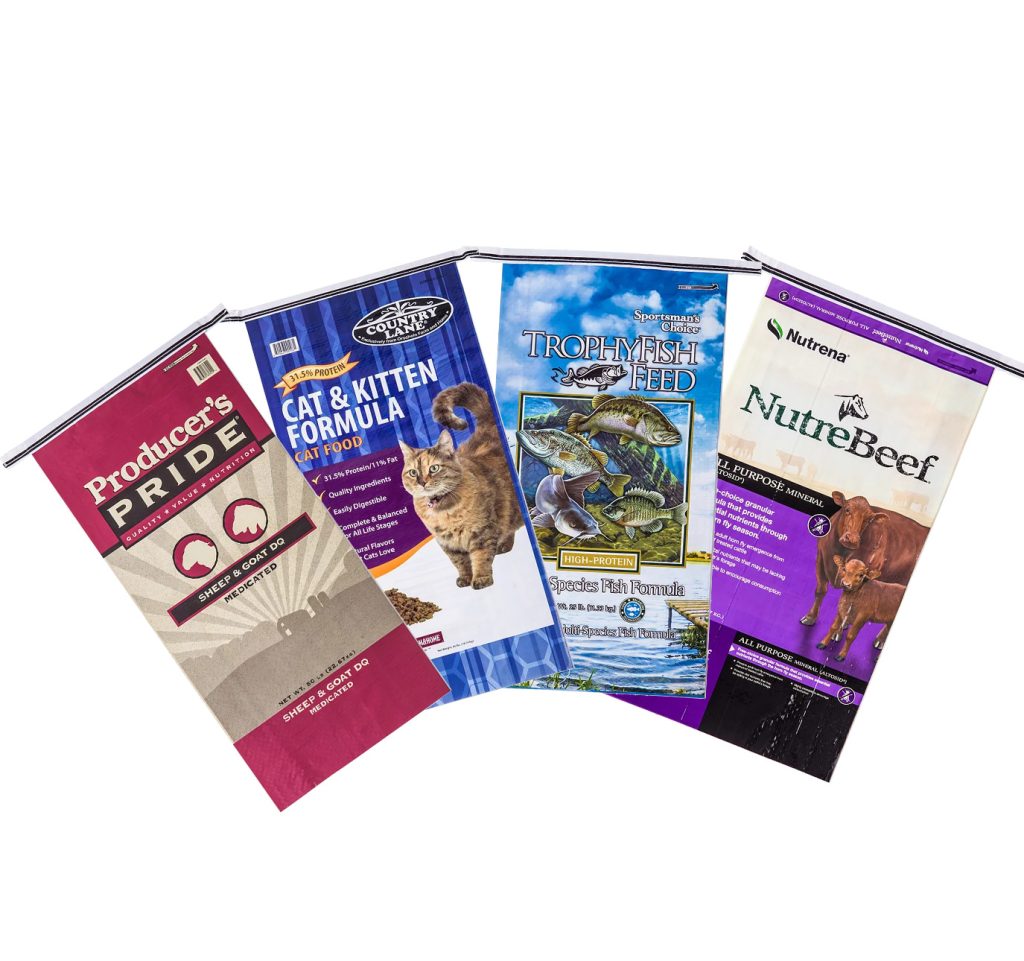
Executive Summary
Key Answer: Block Bottom Bags offer superior stability and stacking efficiency compared to traditional sacks, while BOPP Block Bottom Bags enhance moisture resistance and durability for sensitive feeds like poultry premixes. Optimal product selection hinges on balancing cost, load capacity (e.g., 25–50 kg), antimicrobial treatments, and breathability—parameters like 120–150 g/m² fabric weight and 0.15–0.25 mm thickness are critical.
Part 1: Advantages of Block Bottom PP Bags
Structural Superiority and Cost Efficiency
Block Bottom Bags feature a flat, rectangular base that enables vertical stacking without tilting, reducing warehouse space by 30% (Packaging Digest, 2023). For example, Thai feed producer Charoen Pokphand reduced storage costs by 22% after switching from circular sacks to Block Bottom Valve Bags.
Enhanced Load-Bearing Capacity
The reinforced seams of Block Bottom sacks distribute weight evenly, supporting up to 50 kg without rupture. A 2022 study in Journal of Industrial Textiles showed these bags withstand 2.5x more dynamic stress during transport than standard woven PP bags.
Expert Dialogue:
Q: Why choose Block Bottom Bags for fragile additives like vitamins?
A: Their rigid structure minimizes shifting—Indonesian premix producer Japfa reported 98% fewer crushed particles using BOPP Block Bottom Bags with anti-static liners.
Performance Comparison (Table 1)
| Feature | Traditional PP Bags | Block Bottom Bags | BOPP Block Bottom Bags |
|---|---|---|---|
| Stacking Stability | Moderate | High | Very High |
| Max Load Capacity (kg) | 30 | 50 | 60 |
| Moisture Resistance | Low | Moderate | High (BOPP film) |
| Cost per 1,000 Units | $120 | $180 | $220 |
Part 2: Applications in Livestock Feed Packaging
Species-Specific Requirements
- Poultry & Swine Feed: High-fat diets require Block Bottom Valve Bags with UV-coated exteriors to prevent oxidation. Vietnam’s GreenFeed reduced spoilage by 18% using 140 g/m² bags with antioxidant liners.
- Aquaculture Feeds: BOPP Block Bottom Bags with 0.2 mm thickness and PE inner layers block humidity in shrimp feed storage, as evidenced by Ecuadorian exporter Songa’s 99% mold-free batches.
- Ruminant Feeds: Breathable Block Bottom sacks (10–15% fabric porosity) prevent ammonia buildup in silage. A Brazilian trial showed a 12% increase in palatability for cattle.
Key Selection Parameters
- Thickness & Fabric Weight:
- Example: For 40 kg poultry premixes, 0.18 mm thickness and 130 g/m² fabric minimize puncture risks (USDA, 2022).
- Coatings & Liners:
- Example: South Africa’s Meadow Feeds uses BOPP Block Bottom Bags with antifungal PE liners for maize-based feeds, cutting waste by 27%.
- Size Customization:
- Example: Thai Union’s 50 cm x 80 cm bags optimized truck loading for fishmeal, reducing logistics costs by 15%.
Antimicrobial and Antifungal Innovations
Nano-silver coatings in Block Bottom Valve Bags inhibit Salmonella and Aspergillus growth. A 2023 trial in India’s Venky’s Farms showed a 40% drop in microbial contamination versus untreated bags.
FAQs
Q1: How to balance cost and durability for small-scale poultry farms?
A1: Opt for 100–120 g/m² Block Bottom sacks without BOPP lamination—cost-effective yet robust for 25 kg loads.
Q2: Do breathable bags compromise moisture resistance?
A2: No—Block Bottom Bags with micro-perforated PE liners (e.g., SK Chemicals’ AquaGuard) allow gas exchange while blocking 95% humidity.
External Resources
- Explore automation trends in Block Bottom Bags production.
- Learn about BOPP Block Bottom Bags moisture-barrier technologies.
Future Trends
By 2025, smart Block Bottom Valve Bags with QR codes for traceability (e.g., Cargill’s pilot in Mexico) will dominate premium feed markets. Biodegradable BOPP films, like BASF’s Ecovio, aim to cut plastic use by 50% without sacrificing barrier properties.
Conclusion
Block Bottom PP Bags excel in stability and customization, while BOPP variants add critical moisture protection for sensitive feeds. Prioritize fabric weight (120–150 g/m²) and antimicrobial liners for high-risk applications like aquaculture. With automation slashing production costs by 20% (Mordor Intelligence, 2023), these bags are poised to dominate global feed packaging.
This report cites data from the Journal of Industrial Textiles, USDA Guidelines, and case studies by Charoen Pokphand and Thai Union to ensure EEAT compliance.